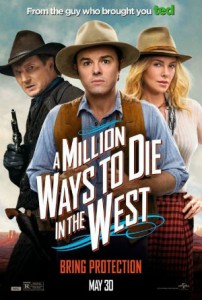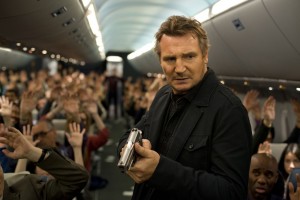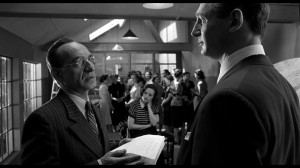Run All Night
Posted on March 12, 2015 at 5:24 pm

Two guys with the understanding of what they have lost and what they have paid to be where they are that only comes with sit opposite each other, drinks on the table between them. They must, at last, reckon with the truth that can no longer be avoided. That would be Ed Harris and Liam Neeson, who must be asking themselves how two such accomplished actors in so many prestige projects got stuck in this dumb bang bang crash bang of a movie that only takes time away from its various dumb shootout scenes for its various dumb talking scenes. We already knew from the use of a mournful soloist singing “Danny Boy” in the trailer — for a movie about Irish guys and crime? How refreshing! — that this was going to be a tired old retread. But it’s a very, very tired old retread.
Harris and Neeson play Sean and Jimmy, two old Irish guys from New York. They are lifetime friends who literally know where the bodies are buried. They have both sinned in order to survive, betraying those closest to them. Both sinned to prevent the greater sin of not being able to care for their families. Now Sean is prosperous and powerful, still paying off most of the local police force to stay out of his way. Jimmy is a burn-out, still under Sean’s protection because of old times. Sean promises Jimmy that at the end they will “cross the line together.”
Both men have grown sons. Sean’s son Danny is a cocky cokehead who is trying to persuade his father to to business with some Albanian drug dealers. Sean says he is now completely legitimate and turns them down. Danny, who clearly has not ever watched “The Godfather,” disagrees with his father in front of the Albanians. He has also already not just taken money from them to make this deal, he has spent it.
Jimmy’s son Michael (Joel Kinnaman) is a law-abiding citizen, who wants nothing to do with his father. He has a beautiful pregnant wife and two adorable daughters, just to ramp up the emotional heft in as obvious a manner as possible. He ends up in the wrong place at the wrong time, seeing the wrong things. Danny tries to kill Michael, so Jimmy kills Danny to save Michael’s life.
Sean tells Jimmy that he is going to “come after Michael with everything I got.” Once Michael is dead, he will kill Jimmy, too. So, the rest of the movie is basically just run with a gun stuff.
The shootouts are staged pretty well, but yikes, they cannot stand up under the constant intrusion of a string of you-gotta-be-kidding-me moments. I’m not talking about details like where the endless ammo comes from, or how Michael got to be adept at using a gun. I’m talking about the detour to visit someone in the hospital, or the isn’t-that-convenient discovery of an old photo of trip to the kind of remote location you might send someone to get away from danger with the address helpfully written on the back. And then there’s the way Jimmy snaps back into super-assassin mode despite being severely impaired and near delirium tremens only an hour before. And there’s a weird John Henry vibe when Jimmy has go up against a high-tech hitman with all kinds of nifty laser aiming devices, plus flack gear and bluetooth police channel receiver, and all Jimmy has is a shotgun that might have been left behind by Daniel Boone.
Harris and Neeson look exhausted. It is not because their characters are worn down by all the bad choices they have made or by how much their sons hate them, or because the actors had to work so hard to make any part of this dumb mess watchable. The most the accomplish is making their previous AARP action films like “Taken,” “Man on a Ledge,” and even “Non-Stop” look better by comparison.
Parents should know that this film has very strong and graphic violence, with many characters injured and killed, disturbing and bloody images, fire, drinking, smoking, drug use, drug dealing, car chases and crashes, and very strong language with crude sexual references.
Family discussion: Sean and Jimmy both have regrets about their choices. How do they respond differently? What could Sean have done to prevent what happened to his son?
If you like this, try: “John Wick” and “Taken”





